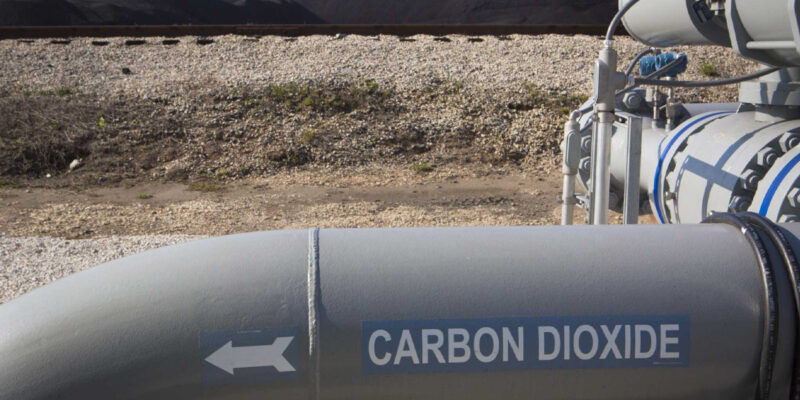(By Victor Skinner/The Center Square) — Residents vomiting in the street, and others unresponsive, while emergency vehicles stalled due to a lack of oxygen, is how Jerry Briggs described the scene of a CO2 leak in Mississippi.
For about four hours, the fire coordinator in Warren County, Mississippi worked with emergency responders in neighboring Yazoo County to drag dozens of residents to safety, including some that continue to have health issues four years later, Briggs said.
“The biggest thing your people are going to have to have that they don’t have is manpower,” Briggs told the House Committee on Natural Resources and Environment on Tuesday. “You can’t depend on these pipeline companies to try to save you.”
Briggs, one of several experts who testified on various aspects of the emerging carbon capture industry, said officials in Yazoo County were unaware of the CO2 pipeline running through Satartia until it ruptured and it’s a similar situation in Louisiana.
“I think where the problem lies is they don’t know what’s in their own community,” he said.
The big question, Briggs said, is “How do you enforce the law that you already have?”
It’s the same question residents concerned about dozens of proposed carbon capture and sequestration projects across the state are pondering as Louisiana moves to lead the budding industry boosted by taxpayer subsidies.
Residents and local officials near several proposed sites aired a wide variety of concerns — from the impact of drilling injection wells on wetlands and aquatic habitats, to subsurface trespassing, to a lack of comprehensive emergency response plans — during a series of legislative task force meetings last year.
Lawmakers are now preparing to consider regulations to address some of those concerns, with the meeting on Tuesday intended as an overview of issues including eminent domain, carbon capture and water resources, and emergency preparedness.
Keith Hall, director of the Energy Law Center at Louisiana State University, laid out how companies approach acquiring surface and subsurface rights and why carbon capture companies will work to avoid using eminent domain, if possible.
Tommy Smart, general counsel for the Louisiana Oil and Gas Association, told the committee the industry is working to develop pooling and utilization practices that are commonly used in the oil and gas industry to secure leases across multiple properties.
“The reason why you need eminent domain is mostly to deal with small interest and heirship issues” involving multiple owners of individual properties, Smart said.
Advertisement
Oil City Republican Rep. Danny McCormick expressed concern about how landowners would be compensated, and transparency in that process.
“That does concern me we’re putting speed ahead of private property rights,” he said. “Chasing billions of federal dollars I don’t think is the most important thing.”
Other testimony came from Department of Natural Resources officials about well permitting and monitoring to protect drinking water, which are specific to each project. They explained the companies involved would provide regular ongoing monitoring, but could not provide specifics on how frequently the department would conduct site inspections or verify the data.
Scott Eustis, coastal wetland specialist with Healthy Gulf, also testified about environmental concerns with wetlands, where a low value per acre coupled with tax credits have made those areas attractive for the oil and gas industry in the past. In many places, operators cleared areas that were later abandoned.
“We fear a similar pattern when we look at carbon capture at this scale,” Eustis said, noting the tax credits for carbon capture are much larger. He pointed to more than 28,000 uneconomic oil and gas wells in the state as evidence of the industry’s regard for natural resources and potential vectors for migration of CO2 stored underground.
“We don’t have a lot of confidence given that the industry has left a lot of wreckage across the state that some of those longer-term, 10-year, 50-year obligations (to monitor projects) will be met,” Eustis said.
Still, others noted projects aimed at capturing carbon from existing power plants will ultimately come at a cost to customers, who are required to repay utilities for upgrades.
Advertisement
Advertisement

